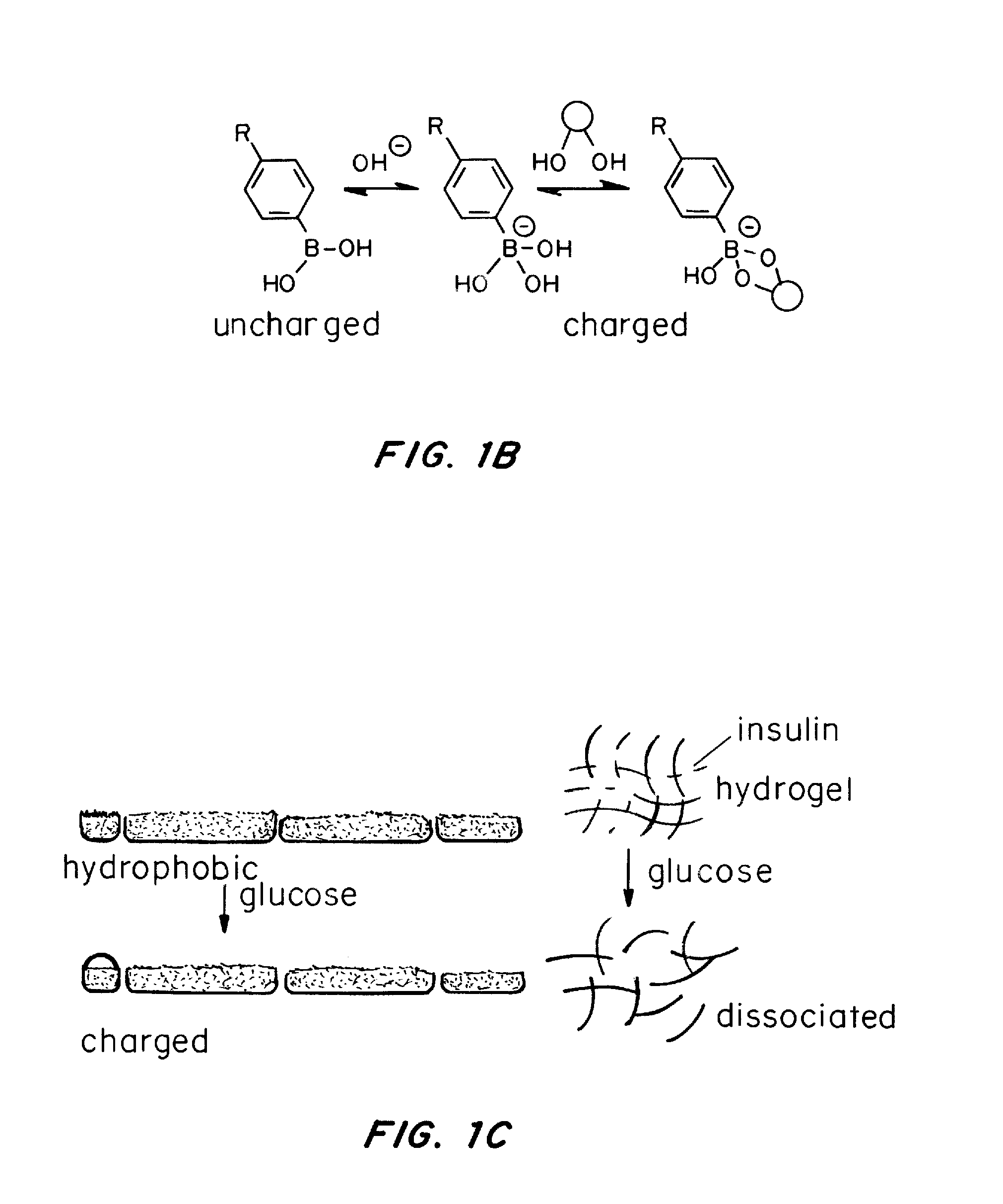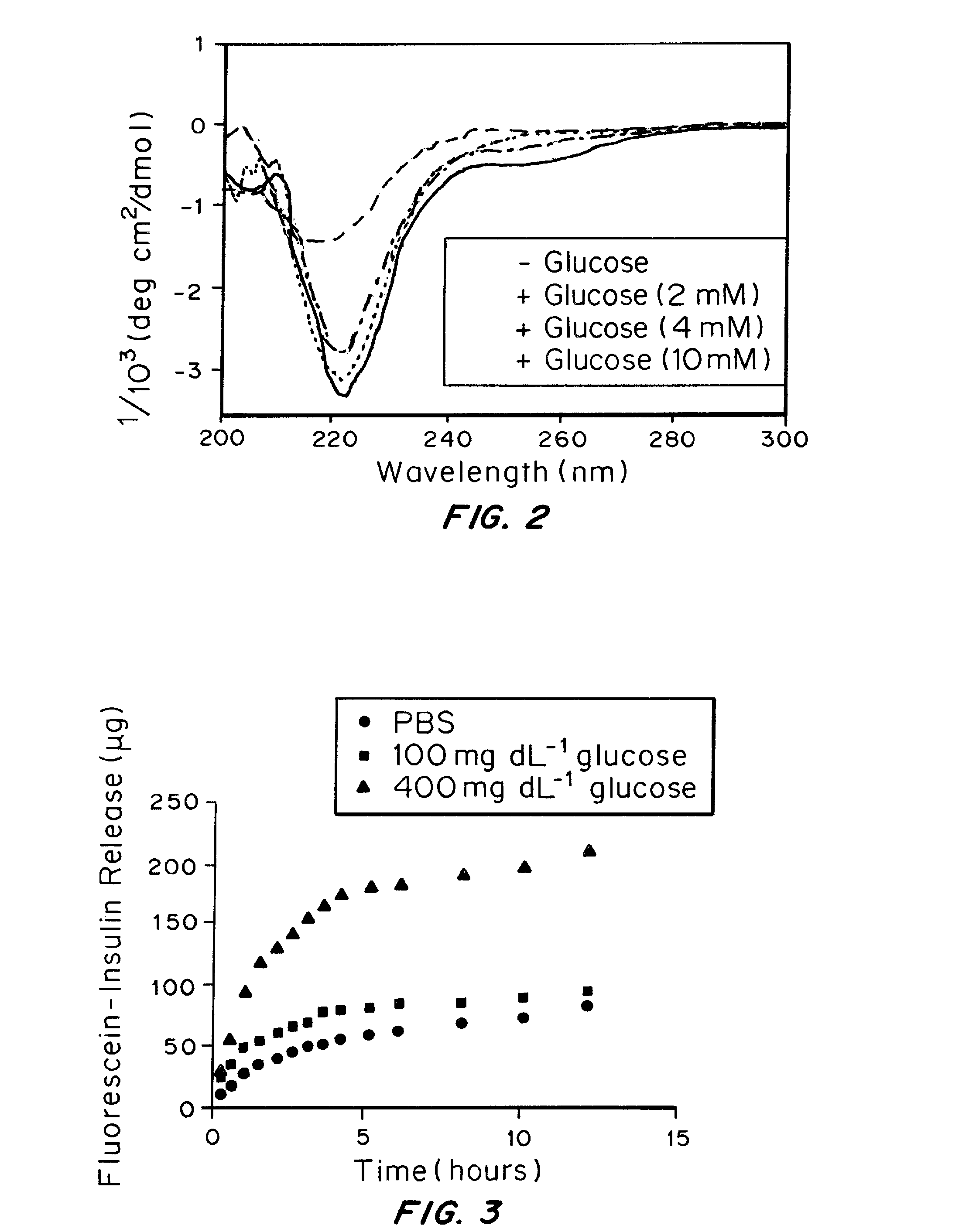Self-regulated peptide hydrogel for insulin delivery
a self-regulated, peptide-based technology, applied in the direction of hormone peptides, peptide/protein ingredients, peptides, etc., can solve the problems of gel becoming more unstable, etc., and achieve the effect of avoiding both hyper- and hypoglycemia
- Summary
- Abstract
- Description
- Claims
- Application Information
AI Technical Summary
Benefits of technology
Problems solved by technology
Method used
Image
Examples
example 1
Synthesis of Amphiphilic Peptides
[0097]An amphiphilic peptide molecule was synthesized using solid phase peptide synthesis (SPPS). The N-terminus was modified with 4-carboxylphenylboronic acid pinacol ester using standard peptide coupling chemistry. 1 wt % peptide gels were formed in a 0.1 M NaOH solution with the addition of 40 mM CaCl2. The mixture was incubated for 1 hr at room temperature to allow for complete gelation. Transmission electron microscopy (TEM) of peptide solution validated the formation of typical bundled nanofibers generated by PAs.
[0098]To demonstrate glucose responsiveness, the gel was incubated in a glucose solution. Incubation of the gel in a glucose solution overnight promoted the dissociation of the nanofibers and resulted in a free-flowing solution. The glucose-induced dissociation can also be confirmed by TEM. Short fibers and amorphous particles were clearly observed in samples in which the sample solution was pre-mixed with 400 mg / dL glucose and incubat...
example 2
In Vitro Insulin Release from Gel
[0099]Materials and Methods
[0100]Once the gel demonstrated the ability to undergo macroscopic changes in response to glucose, the utility of this material as an insulin delivery device was tested. The gel was formed and subsequently immersed in a FITC-conjugated insulin solution (1 mg / mL) to absorb insulin. After overnight incubation at room temperature, gel samples encapsulated with insulin were incubated with 1×PBS solutions with varying glucose levels, including a hyperglycemic level (400 mg / dL), a normal level (100 mg / dL) and a control level (0 mg / dL).
[0101]Results
[0102]As shown in FIG. 3, the accumulated insulin release plots determined by a fluorescence reader demonstrated that peptide gel can continuously release insulin in response to hyperglycemic glucose levels. In contrast, remarkably low release rates were detected when treated with the normal glucose level and control solution, which substantiate the glucose-responsive function of the pe...
PUM
| Property | Measurement | Unit |
|---|---|---|
| pH | aaaaa | aaaaa |
| concentrations | aaaaa | aaaaa |
| concentrations | aaaaa | aaaaa |
Abstract
Description
Claims
Application Information
 Login to View More
Login to View More - R&D
- Intellectual Property
- Life Sciences
- Materials
- Tech Scout
- Unparalleled Data Quality
- Higher Quality Content
- 60% Fewer Hallucinations
Browse by: Latest US Patents, China's latest patents, Technical Efficacy Thesaurus, Application Domain, Technology Topic, Popular Technical Reports.
© 2025 PatSnap. All rights reserved.Legal|Privacy policy|Modern Slavery Act Transparency Statement|Sitemap|About US| Contact US: help@patsnap.com



